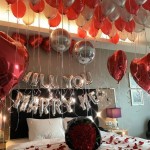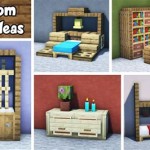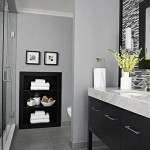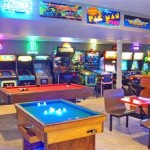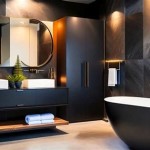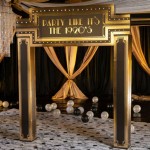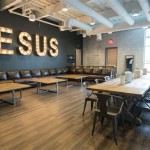Baby Room Decor: Name Letters – A Comprehensive Guide
Decorating a baby’s room is a special and exciting process. Parents often spend considerable time and effort creating a nurturing and aesthetically pleasing environment for their little one. Among the multitude of decorating options, personalized name letters are a popular choice. They offer a unique way to add a personal touch, enhance the room's visual appeal, and potentially serve as a cherished keepsake for years to come. This article provides a comprehensive overview of baby room decor name letters, covering various aspects from material selection to design considerations and placement strategies.
Material Selection: The Foundation of Your Letters
The choice of materials significantly impacts the overall look, durability, and safety of the name letters. Several options are available, each with its own set of advantages and disadvantages. Understanding these differences is crucial for making an informed decision.
One common material is wood. Wooden letters offer a classic and timeless aesthetic. They can be painted, stained, or left natural, allowing for considerable customization. Wood provides a sturdy and durable base, making it suitable for various display methods. However, it is essential to ensure that the wood is properly sealed and finished to prevent splinters or the release of volatile organic compounds (VOCs), safeguarding the baby's delicate respiratory system. Consider using non-toxic, water-based paints and sealants specifically designed for children's products.
Another popular option is acrylic or plastic. Acrylic letters are lightweight, durable, and available in a wide range of colors and finishes, including metallic and glitter options. They are also generally easier to clean than wooden letters. Unlike wood, acrylic is often less susceptible to warping or cracking due to changes in humidity. However, it is critical to choose high-quality, BPA-free plastic to eliminate the risk of harmful chemical exposure, and to consider the potential for sharp edges if the letters are cut in intricate designs.
Fabric-covered letters offer a softer and more tactile element to the decor. These letters are typically made from a foam or cardboard base and covered in various fabrics, such as cotton, linen, or felt. They introduce texture and visual interest, complementing other soft furnishings in the room. Fabric letters are generally lightweight and easy to hang but may accumulate dust more readily and may not be as durable as other options. Choose fabrics that are washable and consider the colorfastness to maintain their appearance over time. Ensure the fabric is securely adhered to the base to prevent it from peeling or detaching.
Design Considerations: Shaping the Aesthetic
The design of the name letters is another critical aspect. The font, size, color palette, and overall style must harmonize with the baby room's theme and existing decor. The design should be visually appealing and complementary to the overall aesthetic of the room.
Selecting the right font is paramount. Consider the room's theme when choosing a font. For instance, a whimsical nursery might benefit from a playful, rounded font, while a more modern space might suit a clean, sans-serif font. Font size should be appropriate for the intended display location. Letters too small may be difficult to see, while letters too large can overwhelm the space. It is advisable to measure the available wall space or the surface where the letters will be placed and choose a font size that allows for balanced proportions. The letters' height and width should scale naturally to preserve readability and visual harmony.
The color palette of the name letters should complement the room's existing colors. The letters can match the primary colors of the room or provide a contrasting accent. Consider the mood you want to create. Soft pastels often evoke a sense of calm and tranquility, while brighter colors can introduce energy and playfulness. The paint or fabric finish should be consistent with the room's style. Matte finishes are generally more understated, while gloss finishes can add a touch of elegance, and metallic finishes can add a touch of glamour or a modern flair. Color choices should also be age-appropriate, avoiding overly stimulating colors for younger infants and transitioning to more vibrant shades as the child grows.
Consider incorporating embellishments to personalize the letters further. These might include ribbons, buttons, beads, or other decorative elements. However, it is crucial to ensure that any added embellishments are securely attached and pose no choking hazards for the baby. Simpler designs are often preferred as they will maintain a longer appeal as the baby grows. If incorporating embellishments, keep them consistent with a unified style for a cohesive appearance. Ensure they are safe and securely fastened to the lettering.
Placement Strategies: Finding the Perfect Spot
Where the name letters are placed significantly impacts their visual impact and overall contribution to the room's decor. Careful consideration of the location ensures that the letters are seen and enjoyed.
Above the crib is a common and easily visible location. This is a central focal point, immediately visible upon entering the room. However, it is crucial to ensure secure installation avoiding any risk of falling letters, this could present a hazard to the baby. The letters should be mounted securely onto studs or using appropriate wall anchors that are weight-rated for the letters. Consider the height of the letters to avoid obstruction. A height that allows for easy visibility from the baby's perspective is ideal.
Another option is to place the letters on a shelf or dresser. This creates a more playful and flexible display. When placing letters on a shelf, ensure they are stable and cannot be easily knocked over by an inquisitive toddler who may be reaching out to play with them. Arrange the letters alongside other decorative items, such as framed photographs, small toys, or books, to create an integrated vignette. Secure any letters in a place where they are not easily dislodged, by using mounting putty or another suitable adhesive on the base of the letters. This display method allows for easy rearrangement and updates as the child grows.
Name letters can also be incorporated into a wall collage or gallery wall. This allows the letters to blend seamlessly with other artwork and decorations, creating a cohesive and personalized space. The letters can be combined with framed prints, photographs, or other wall hangings, maintaining a consistent style. Consider the arrangement and spacing of the elements to achieve a balanced composition. Maintaining a sense of visual flow is key. The collage should have a unified style.

Baby Name Sign For Nursery Decor Boy Girl Letters First Sweden

Olivia Baby Nursery Name Sign Letters Over Crib Decor Girl Boy


Nursery Decor Name Sign Wall Art Baby

Pin On Stefy

Personalised Letter And Name Nursery Wall Art Kids Room Decor Bespoke Baby


Girl Nursery Name Sign Boywooden Letters For Wall Decor Custom Finland

Wooden Letters For Decoration Baby Name Wall Decor Boston Creative Company

Baby Nursery Name Signs Custom Wall Hanging For
Related Posts
